A Memorable Excursion By Steam Locomotive Along Oigawa River, Shizuoka

Seeking an adventure and wish to enjoy vanishing old Japan and be taken back to a different era, ride a 1930 vintage steam locomotive along the banks of picturesque Oigawa valley and specular mountain views in northern Shizuoka.
I have lived, worked and traveled throughout Japan over the past 50 years. During this time I’ve had the opportunity to visit Shizuoka Prefecture numerous times - climbing Mt. Fuji, touring the “ochabatake“ (tea fields), scuba diving off the coast of Osezaki and soaking in the great onsen on the Izu Peninsula.

However, I recently discovered a truly, hidden gem in Shizuoka Prefecture, the Oigawa River valley, and had a remarkable journey. The journey starts at Shin-Kanaya Station of the Oigawa Railroad in central Shizuoka Prefecture.

To fully appreciate and absorb the natural beauty of the Oigawa valley and be transported back to a different era, ride a vintage steam locomotive (SL) of the Oigawa RR between Shin-Kanaya and Senzu stations.
Riding the Steam Locomotive Trains
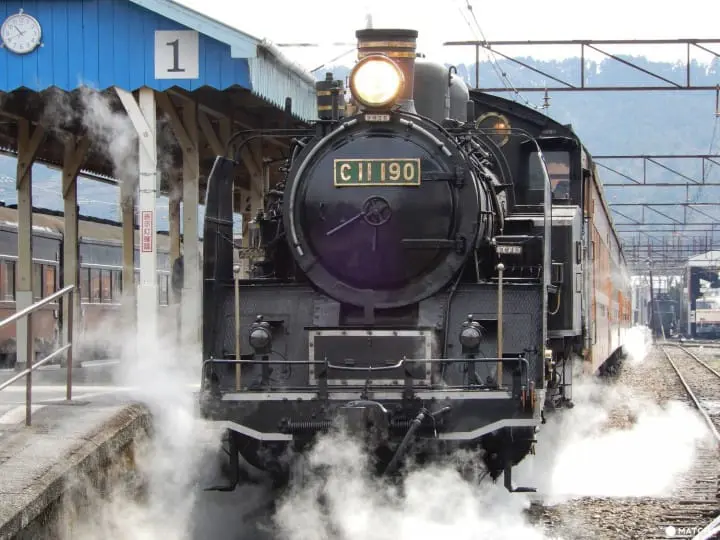
The 40 kilometer, 1 hour 19 minute ride is an unforgettable excursion as you pass along rolling tea fields on one side and the tranquil Oigawa River with amazing views of the Japanese Southern Alps in the distance.

When getting ready to board, watch the conductor punch you ticket with a “kaikyo” (literally ’ticket scissors’) whose cut use to be unique to each station. This kind of scissors can no longer be seen anywhere else in Japan.

As the departure time nears, the SL slowly chugs out of the maintenance area blasting its whistle and spurting clouds of black smoke and steam. You can sense the excitement, especially in the kids and the SL photographers and passengers all vying for the best position to take photos. It’s a thrilling sight.
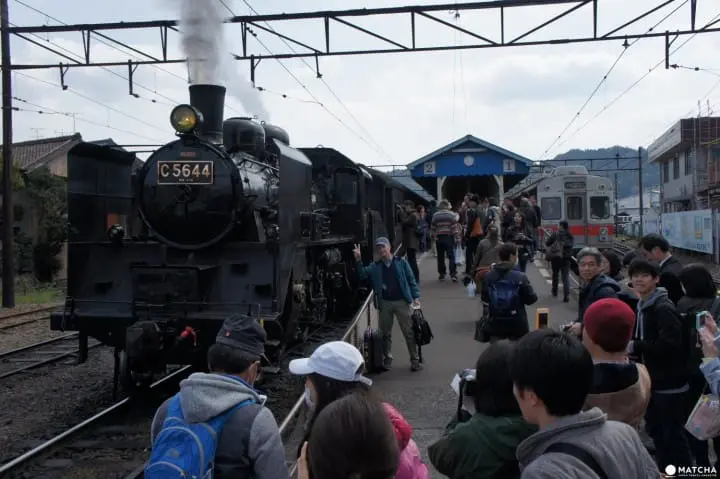

Riding the retro coaches with wooden floors, velvet covered seats, overhead woven rope luggage racks, old ceiling fans, stopping at old Taisho (1912 - 1926) and Showa period (1926-1989) wooden stations, reminds one of a less hurried era when one could soak in the landscape, wave at people working in fields, or smell the fragrances of the flowering plants that are sometimes only at arm's length away from your window.
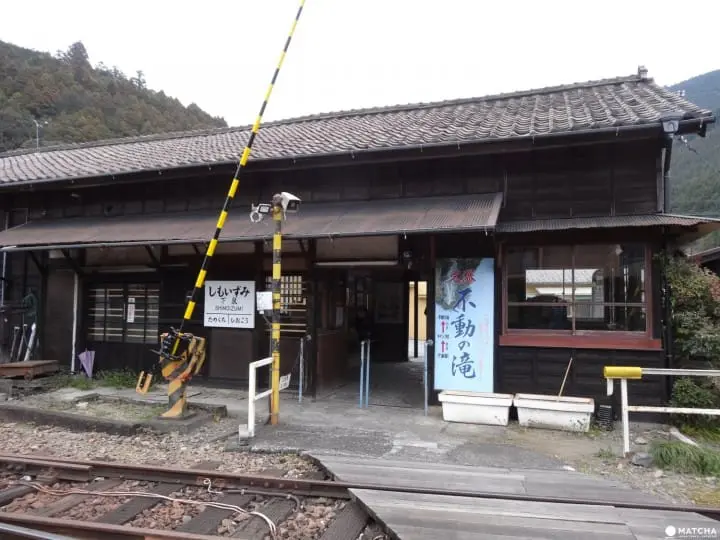
Every time the SL rounds curves or exits several of the long tunnels, you are captivated by the striking panoramic views with the rocky banks of the wide Oigawa River and with the snowy Japanese Southern Alps in the background.
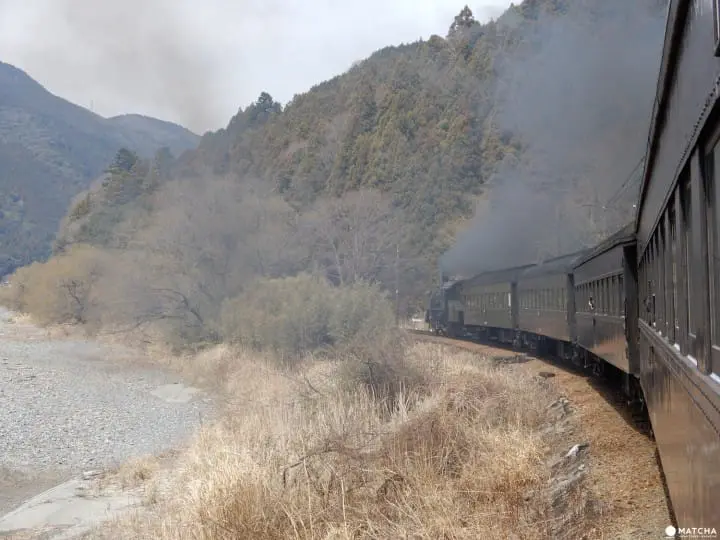
Between Shigo and Shimo-izumi stations, get your camera ready for photographing the longest suspension bridge (220 meters) across the Oigawa. The train actually passes underneath the bridge.
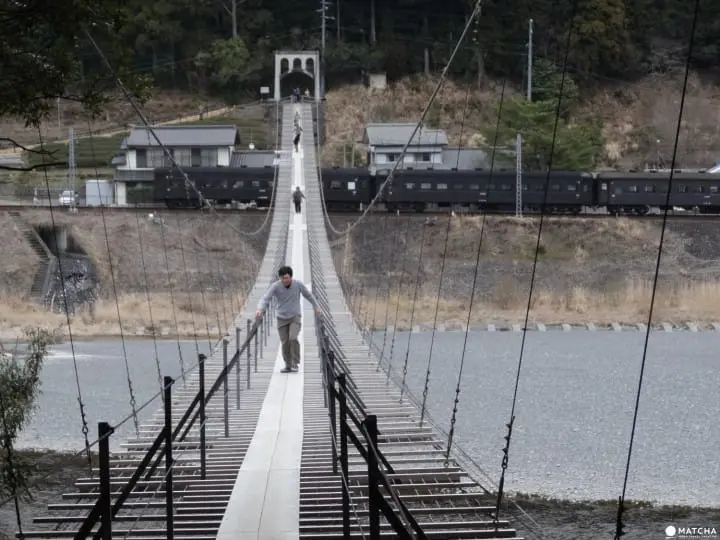
Eating your ekiben (box lunch) while listening to the nostalgic sound of the unique double SL whistle sounds will be a memory you’ll cherish forever. This is the most popular ekiben in the area and is based on the original one sold back in the 1930's.

Japanese SL fans consider the Oigawa Railway the foremost SL operator in Japan. Oigawa Railway is the only railroad in Japan that runs SL trains on a daily basis; in fact, they run four SL daily. In addition, they also operate daily regular electrified train service using passenger cars from the 1950’ and 60’s.
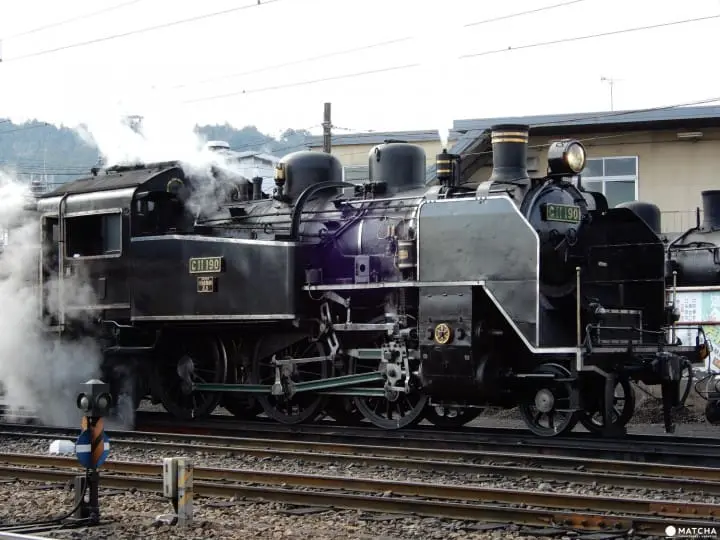
Between March 25th and April, the annual Ieyama Cherry Festival is held at Ieyama Park. The 1-kilometer Cherry Blossom Tunnel parallels the Oigawa Railway line providing wonderful views. You might consider getting off and enjoying the festival events being held at the park.


The journey on the SL ends at Senzu Station; however, there’s still much more to see and do in the area. There’s another small, very informative museum on the history of steam locomotives in Japan.

If you wish to ride Oigawa Railway SL, you can make advanced, online reservations from 125 days to just two days prior to departure. Simply go to the Oigawa Railway online reservations website and click on “Reservations in English”. Even if you do not make online reservations, you can purchase tickets at the Loco Plaza across from the station.
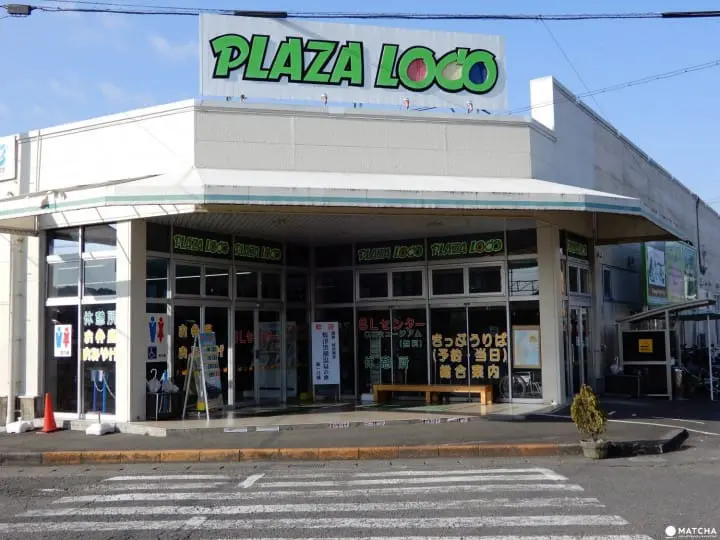
However, I highly advise arriving early, especially during the peak cherry blossom season. A one-way ticket for the express SL is 2520 yen (1720 yen for the normal fare plus 800 yen for the express SL fare).
Shin-Kanaya Station - Enjoy Meeting the Locals
Arrive at least one hour before your departure and enjoy a leisure walk around Shin-Kanaya Station, Loco Plaza and the SL Park. It’s a chance to relax and snap photos of the station, Loco Plaza and the park.
The two-storey wooden Shin-Kanaya Station houses “This is a Café” and a small shop selling excellent soft ice cream called “Cremia”. “This is a Café” serves delicious coffee and light dishes and the young lady operating the café speaks fluent English.
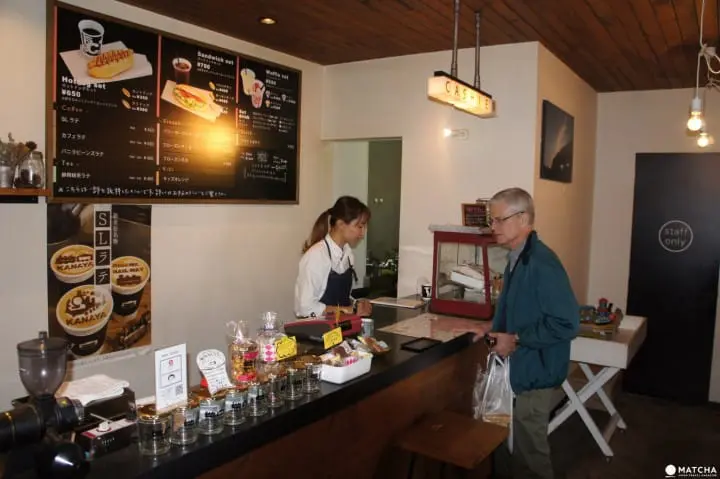
Friendly Ms. Yamada, who sells the Cremia soft cones, jumps at the chance to engage in conversions with foreign tourists but only in Japanese.

Immediately outside the station is a black, round Japanese post office box which slightly resembles an SL. This was setup in July 2016 by the Oigawa Railway and Kanaya Post Office to commemorate the 40th anniversary of the revival of the SL train operations.
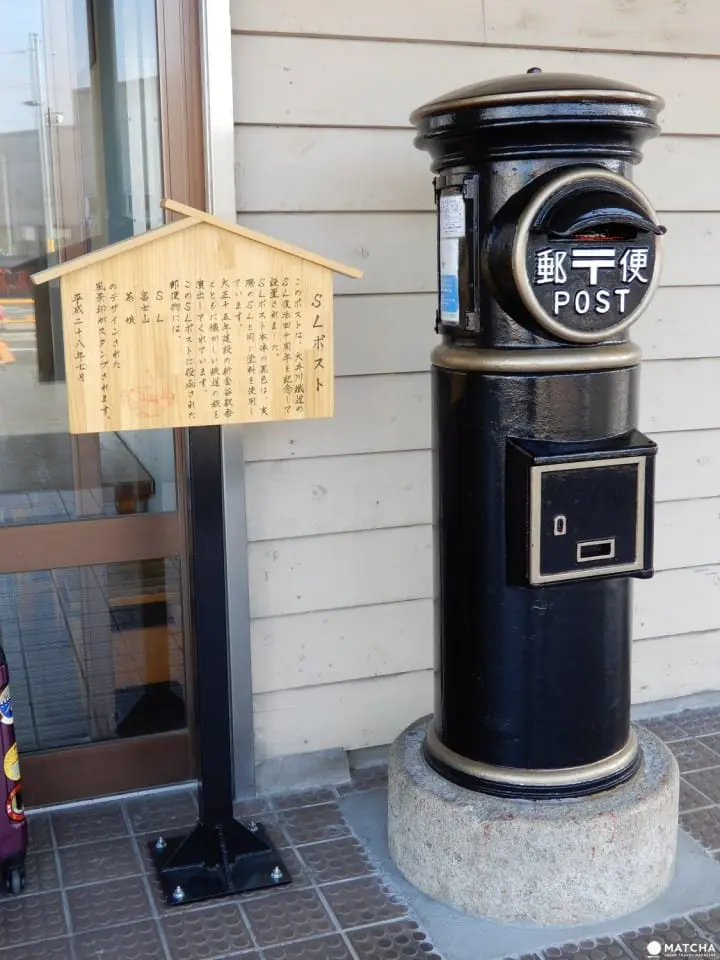
It’s an opportunity to buy a postcard and have it postmarked with a stamp that includes images of Mt. Fuji, an SL and a tea-harvester.
Relax and Shop at Loco Plaza
Across from the station is Loco Plaza where you’ll pick up your ticket. Loco Plaza, which opens at 8:30, also includes a souvenir shop with a wide assortment of local food products and children toys such as SL models and the Thomas engines.
Don’t forget to purchase your ekiben (box lunches sold at train stations) for your journey. Buy as soon as possible since all the ekiben were sold out by departure! There are four types of ekiben, but the most popular is the one decorated with the Oigawa SL logo (1080 yen).
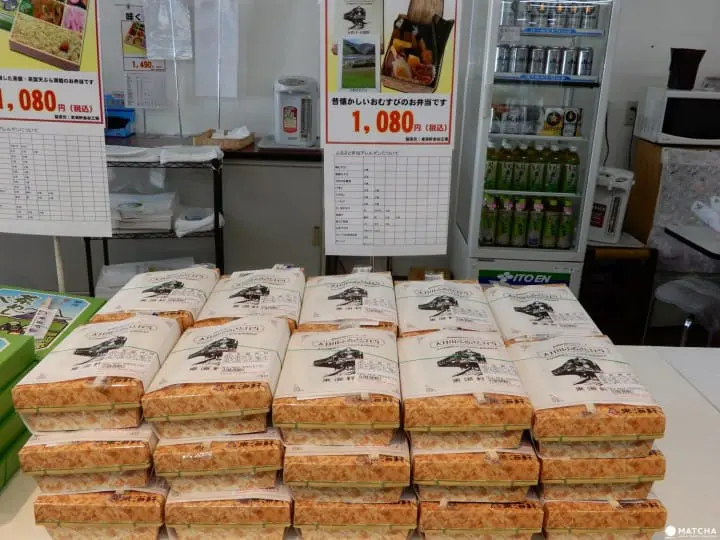
This type of ekiben was served in the early Showa era (1926-1989) and includes locally raised products. You might also consider buying the Oigawa SL beer for 480 Yen.
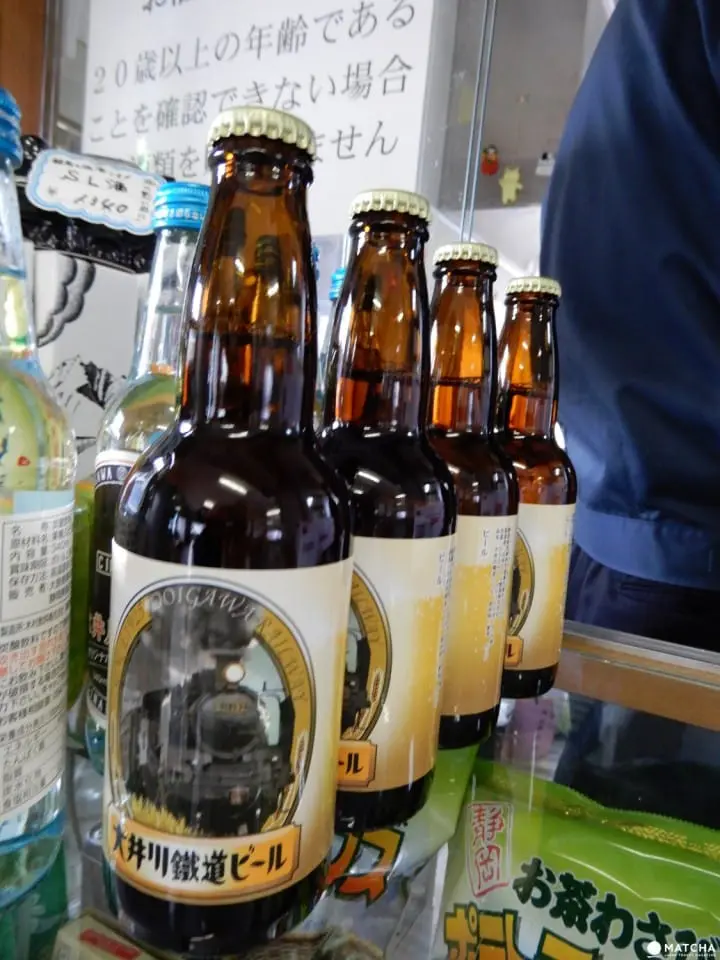
As most everyone knows, Shizuoka is Japan’s number producer of tea (about 40 percent or more) and the Oigawa valley probably has more tea fields than anywhere else on the planet. Next to the souvenir shop is a shop selling locally produced tea, such as Kawane. You have the chance to taste the tea before you buy it.

Loco Plaza also has a small museum displaying two old German-made SL, a 1953 passenger car, a recreation of a 1930’s station building, retro posters and much more, especially for the kids.


Loco Plaza has a great area for kids to play so it's recommended for families with small children. They can enjoy playing with small scale models of the various Thomas engines.
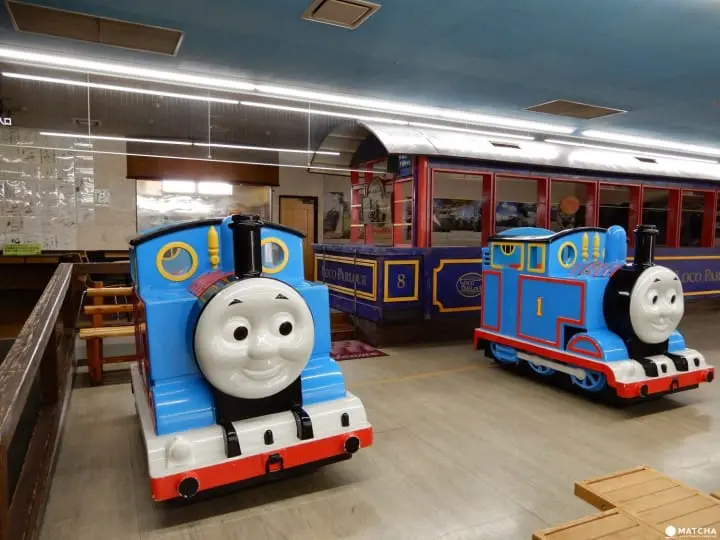
For more information on Oigawa Railway’s Thomas and Friends refer to this MATCHA article: Meet Thomas and Friends at the Oigawa Railway Thomas Fair!
The Steam Locomotive Park
When you exit Loco Plaza turn right into the parking lot and at the far end is the Steam Locomotive Park. The SL Park includes the round-table for switching incoming and outgoing SL trains. Adjacent to the park are the SL maintenance and restoration facilities.
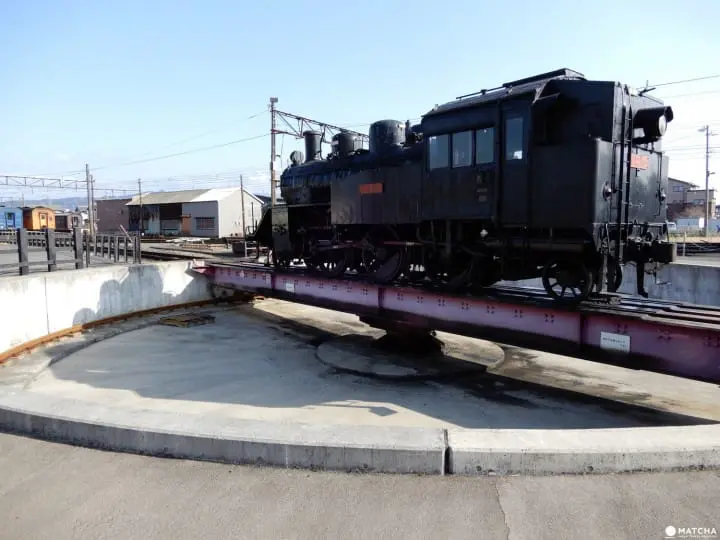
You can get a guided tour of the facility by contacting the Oigawa Railways. Don’t miss the very informative signboard providing information on all four SL trains operated by Oigawa Railway.
I was fortunate enough to meet Chief SL Engineer Kondo (who has worked for the Oigawa RR for 17 years) at the SL Park who kindly answered my questions. I asked him what the alpha-numeric designations on the brass plates on the front and sides of the SL trains meant.


Kondo explained that the train we would ride today was the C56 44 (he would be the engineer) and that the “C” meant how many driving wheels the SL had. “A” would be only one, “B” two, “C” three and, etc. The number “52” indicated the model and “44” meant it was the 44th SL produced of this model.
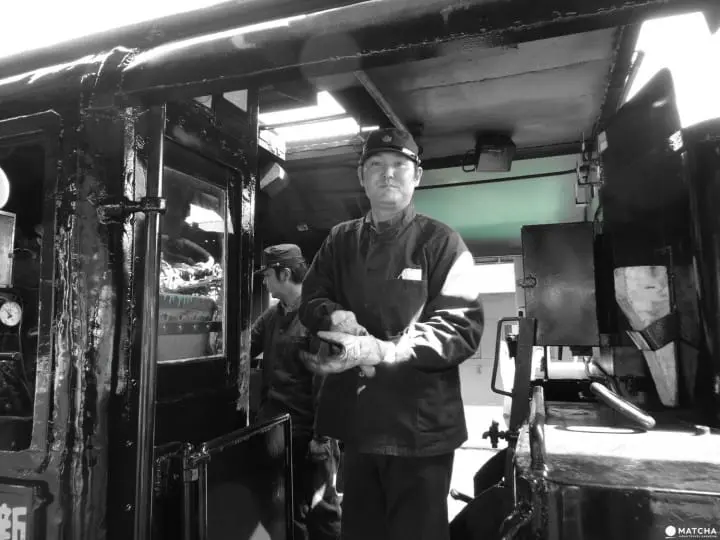
Mr. Kondo also explained that the C56 44 SL was manufactured by Mitsubishi in 1936 and started into service along the Chitose Line in Hokkaido. However, the SL was transported to Southeast Asia to support the Japanese Imperial forces in Burma and Thailand. The C56 44 survived the war and was returned to Japan in 1979, restored and put into daily service by the Oigawa Railway.
In Conclusion
Riding a vintage 1930’s SL along the Oigawa River taking in the beauty of central Shizuoka is truly a memorable experience. Besides the sites around Shin-Kanaya Station, there are numerous scenic, cultural and historical sites along the Oigawa River Valley. Schedule at least two to three days to really appreciate and remember your adventure to central Shizuoka Prefecture. You might consider a farm stay at a local minshuku. (See MATCHA article Farm Stay in Shizuoka - Enjoy Local Hospitality and Beautiful Sights). The Oigawa area is on the top of my bucket list of re-visit sites in Japan.







































![[2026] Top 5 Strawberry Picking Spots in Tokushima, Naruto| Farms and Access Guide for January to May](https://resources.matcha-jp.com/resize/720x2000/2025/03/06-227165.webp)
![[Yamanashi/ Hokuto City] 4 Hot New Spots Opening in 2026](https://resources.matcha-jp.com/resize/720x2000/2025/12/12-252747.webp)


